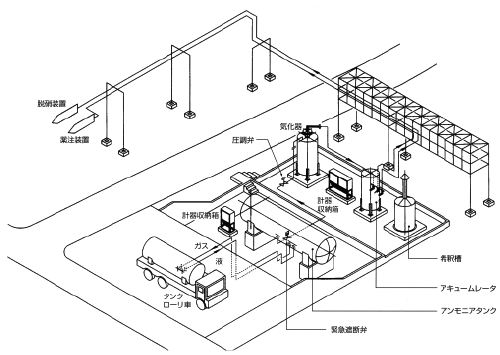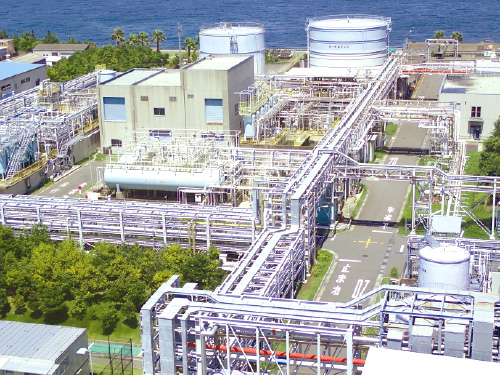Ammonia-based DeNOx Facility
Ammonia-based DeNOx Equipment is a device used to inject ammonia into boiler exhaust gases to reduce and remove nitrogen oxides, which are atmospheric pollutants. This equipment plays a critically important role in environmental conservation within power generation units.


Panoramic View of Ammonia Facilities
Equipment Overview
This equipment comprises ammonia storage facilities, ammonia receiving facilities, vaporization equipment, flue gas injection equipment, control equipment, and ancillary facilities, each designed with a focus on safety and ease of maintenance. This comprehensive approach ensures that the entire system not only meets stringent safety standards but also facilitates straightforward maintenance procedures, thereby enhancing the overall efficiency and reliability of the operation. Such a design philosophy is critical for handling hazardous materials like ammonia and for ensuring the effective and safe reduction of environmental pollutants.
Features
The ammonia injection control method for electrostatic precipitators primarily adopts a control strategy based on proportional injection relative to fuel consumption. Recently, to maintain the concentration of residual ammonia after the reaction at a constant level, a concentration control method has been adopted. This method controls the injection volume and, when combined with the proportional injection method, enables highly accurate control. For measuring residual ammonia, two types of measurement methods are used: one involves using an analysis device, and the other employs a laser-based exhaust gas monitor that allows for instantaneous concentration measurement. This dual approach ensures flexibility and precision in monitoring and controlling ammonia injection, enhancing the efficiency and effectiveness of the pollutant reduction process.
